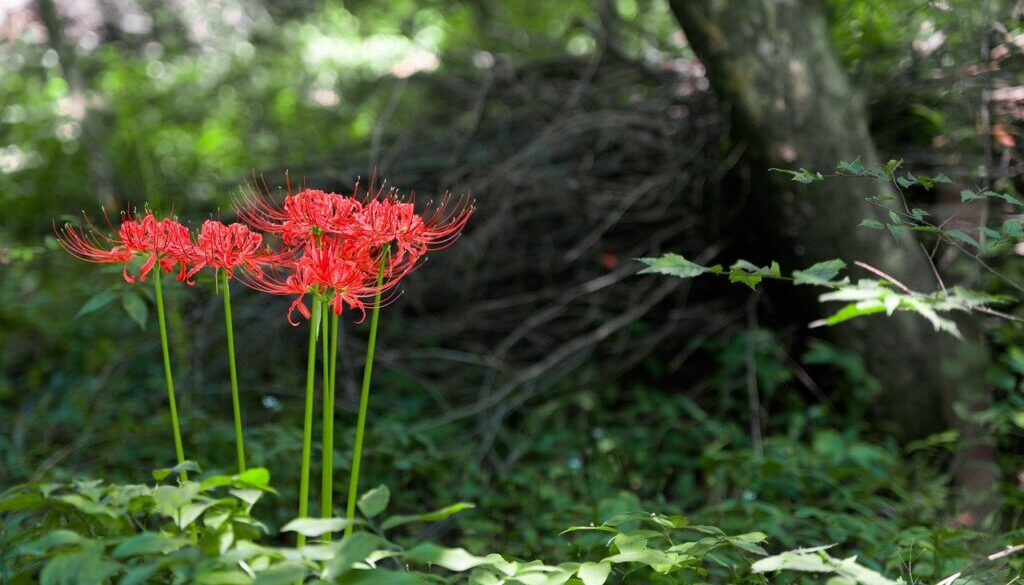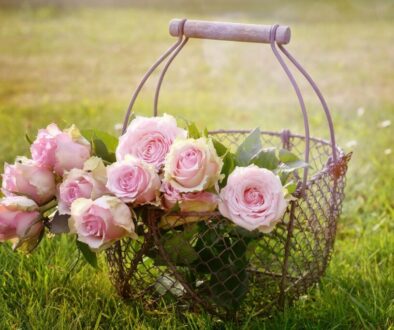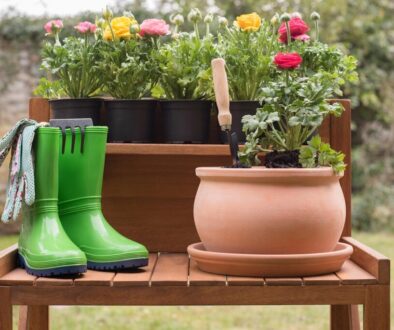Best Flowers for Shade Gardens: Brighten Up Those Dim Corners!
Shade gardens often get a bad rap for being dull, but they don’t have to be! With the right flowers, you can transform those shadowy spots into lush, vibrant retreats. Whether you’re dealing with dappled sunlight or deep shade, there’s a perfect bloom waiting to thrive. Let’s dive into the best flowers for shade gardens and discover how you can create a stunning, low-light paradise.
Why Shade Gardens Deserve More Love
Shade gardens are like the cozy nooks of your outdoor space—quiet, cool, and full of potential. They’re perfect for relaxing on hot summer days, and with the right plants, they can be just as colorful as sun-drenched flower beds. The key is choosing flowers that naturally thrive in low-light conditions. Think of shade-loving blooms as nature’s way of saying, “Hey, even the darkest corners deserve some beauty!”
You don’t need to be a gardening pro to make it happen. With a little planning and the right plant choices, you can create a shade garden that’s the envy of the neighborhood. Ready to get started? Let’s explore some of the best flowers for shade gardens.
Top Picks for Shade-Loving Flowers
1. Hostas: The Shade Garden Superstar
Hostas are the ultimate shade garden workhorses. Known for their lush foliage, they come in a variety of colors, from deep greens to striking blues and variegated patterns. While they’re primarily grown for their leaves, hostas also produce delicate, bell-shaped flowers in summer.
These perennials are low-maintenance and thrive in partial to full shade. Plus, they’re perfect for filling in large spaces or adding texture to your garden. Pair them with other shade-loving flowers for a dynamic look.
2. Astilbes: Feathery Delights for Shady Spots
If you’re looking for a flower that adds height and drama, astilbes are your go-to. Their feathery plumes come in shades of pink, red, white, and purple, creating a soft, romantic vibe.
Astilbes love moist, shady areas, making them ideal for woodland gardens or near water features. They bloom in early to mid-summer, and their fern-like foliage stays attractive even after the flowers fade.
 3. Bleeding Hearts: A Touch of Whimsy
3. Bleeding Hearts: A Touch of Whimsy
Bleeding hearts are like something out of a fairy tale. Their heart-shaped pink or white flowers dangle gracefully from arching stems, adding a touch of whimsy to your shade garden.
These perennials bloom in spring and early summer, thriving in partial to full shade. They’re perfect for adding a pop of color to shady borders or under trees. Just be sure to give them well-draining soil to keep them happy.
 4. Impatiens: Color That Pops
4. Impatiens: Color That Pops
When it comes to instant color, impatiens are hard to beat. These annuals come in a rainbow of shades, from bright pinks and purples to soft pastels.
Impatiens thrive in partial to full shade and bloom continuously from spring to fall. They’re perfect for containers, hanging baskets, or filling in gaps in your garden. Plus, they’re super easy to grow, even for beginners.
 5. Foxgloves: Tall and Majestic
5. Foxgloves: Tall and Majestic
Foxgloves are the showstoppers of the shade garden. Their tall spikes of tubular flowers come in shades of pink, purple, white, and yellow, attracting bees and hummingbirds.
These biennials prefer partial shade and moist, well-draining soil. They’re perfect for adding vertical interest to your garden, and their blooms last from late spring to early summer.
 6. Lungwort: A Hidden Gem
6. Lungwort: A Hidden Gem
Lungwort might have an unusual name, but it’s a true gem for shade gardens. Its spotted leaves and clusters of pink, blue, or white flowers add charm to any shady spot.
This perennial thrives in partial to full shade and prefers moist, humus-rich soil. It’s also deer-resistant, making it a great choice for gardens in rural areas.
 7. Columbines: Delicate and Graceful
7. Columbines: Delicate and Graceful
Columbines are known for their unique, bell-shaped flowers and delicate foliage. They come in a variety of colors, including blue, purple, red, and yellow.
These perennials prefer partial shade and well-draining soil. They’re perfect for adding a touch of elegance to rock gardens or shady borders. Plus, they attract pollinators like bees and butterflies.
 8. Toad Lilies: Exotic Beauty
8. Toad Lilies: Exotic Beauty
Toad lilies are the exotic stars of the shade garden. Their orchid-like flowers come in shades of purple, white, and pink, often with speckled patterns.
These perennials bloom in late summer to fall, adding color when many other plants have faded. They thrive in partial to full shade and prefer moist, well-draining soil.
 9. Coral Bells: Foliage and Flowers
9. Coral Bells: Foliage and Flowers
Coral bells are prized for their colorful foliage, which comes in shades of purple, green, silver, and even orange. In summer, they produce delicate spikes of tiny flowers.
These perennials thrive in partial shade and are perfect for adding texture and color to your garden. They’re also drought-tolerant once established, making them a low-maintenance choice.
 10. Japanese Anemones: Late-Season Blooms
10. Japanese Anemones: Late-Season Blooms
Japanese anemones are perfect for adding late-season color to your shade garden. Their daisy-like flowers come in shades of pink and white, blooming from late summer to fall.
These perennials prefer partial shade and moist, well-draining soil. They’re perfect for adding height and elegance to your garden, and they’re also deer-resistant.
 Tips for Designing a Stunning Shade Garden
Tips for Designing a Stunning Shade Garden
Creating a shade garden is all about balance and contrast. Mix different textures, heights, and colors to keep things interesting. For example, pair the bold foliage of hostas with the delicate blooms of bleeding hearts or the feathery plumes of astilbes.
Don’t forget to consider bloom times. Choose a mix of early, mid, and late-season bloomers to keep your garden colorful throughout the growing season. And don’t be afraid to experiment—shade gardens are a great place to get creative!
Bonus: More Shade-Loving Flowers to Explore
11. Ferns: The Ultimate Shade Companion
While not technically flowers, ferns are a must-have for any shade garden. Their feathery fronds add texture and a lush, green backdrop for your blooms.
Ferns thrive in partial to full shade and prefer moist, well-draining soil. They’re perfect for filling in gaps and creating a woodland vibe.
 12. Hellebores: Winter Wonders
12. Hellebores: Winter Wonders
Hellebores, also known as Lenten roses, are perfect for adding color to your shade garden in late winter and early spring. Their cup-shaped flowers come in shades of white, pink, purple, and green.
These perennials thrive in partial shade and prefer rich, well-draining soil. They’re also deer-resistant, making them a great choice for problem areas.
 13. Solomon’s Seal: Elegant and Arching
13. Solomon’s Seal: Elegant and Arching
Solomon’s seal is known for its arching stems and dangling white or greenish flowers. It’s perfect for adding a touch of elegance to your shade garden.
This perennial thrives in partial to full shade and prefers moist, well-draining soil. It’s also deer-resistant and pairs beautifully with hostas and ferns.
 14. Trilliums: Woodland Beauties
14. Trilliums: Woodland Beauties
Trilliums are native woodland flowers that thrive in shady, moist conditions. Their three-petaled blooms come in shades of white, pink, and red.
These perennials are perfect for naturalizing in woodland gardens or shady borders. They prefer rich, well-draining soil and are a great choice for adding a touch of wild beauty to your garden.
 15. Viola: Cheerful and Compact
15. Viola: Cheerful and Compact
Violas, including pansies and violets, are perfect for adding a pop of color to your shade garden. Their cheerful blooms come in a variety of colors, including purple, yellow, and blue.
These annuals or perennials thrive in partial shade and prefer moist, well-draining soil. They’re perfect for containers, borders, or filling in gaps.
 Shade Garden Maintenance Tips
Shade Garden Maintenance Tips
Once you’ve planted your shade garden, it’s important to keep it healthy and thriving. Here are a few tips to help you maintain your shady oasis:
- Water Regularly: Shade gardens often have less evaporation, but they still need consistent moisture, especially during dry spells.
- Mulch Wisely: Mulch helps retain moisture and suppress weeds. Use organic mulch like shredded leaves or bark.
- Prune as Needed: Remove dead or damaged foliage to keep your plants looking their best.
- Fertilize Sparingly: Shade-loving plants generally need less fertilizer than sun-loving ones. Use a balanced, slow-release fertilizer in spring.
- Watch for Pests: Keep an eye out for slugs, snails, and other pests that thrive in shady, moist conditions.
Conclusion: Your Shade Garden Awaits
Shade gardens are a wonderful opportunity to explore a different side of gardening. With the right flowers, you can create a serene, colorful retreat that’s perfect for relaxing and enjoying nature.
So, grab your gardening gloves, pick your favorite shade-loving blooms, and start planting. Your shade garden is waiting to come to life!
Happy Gardening!



 10. Japanese Anemones: Late-Season Blooms
10. Japanese Anemones: Late-Season Blooms Tips for Designing a Stunning Shade Garden
Tips for Designing a Stunning Shade Garden 12. Hellebores: Winter Wonders
12. Hellebores: Winter Wonders 13. Solomon’s Seal: Elegant and Arching
13. Solomon’s Seal: Elegant and Arching 14. Trilliums: Woodland Beauties
14. Trilliums: Woodland Beauties 15. Viola: Cheerful and Compact
15. Viola: Cheerful and Compact Shade Garden Maintenance Tips
Shade Garden Maintenance Tips

